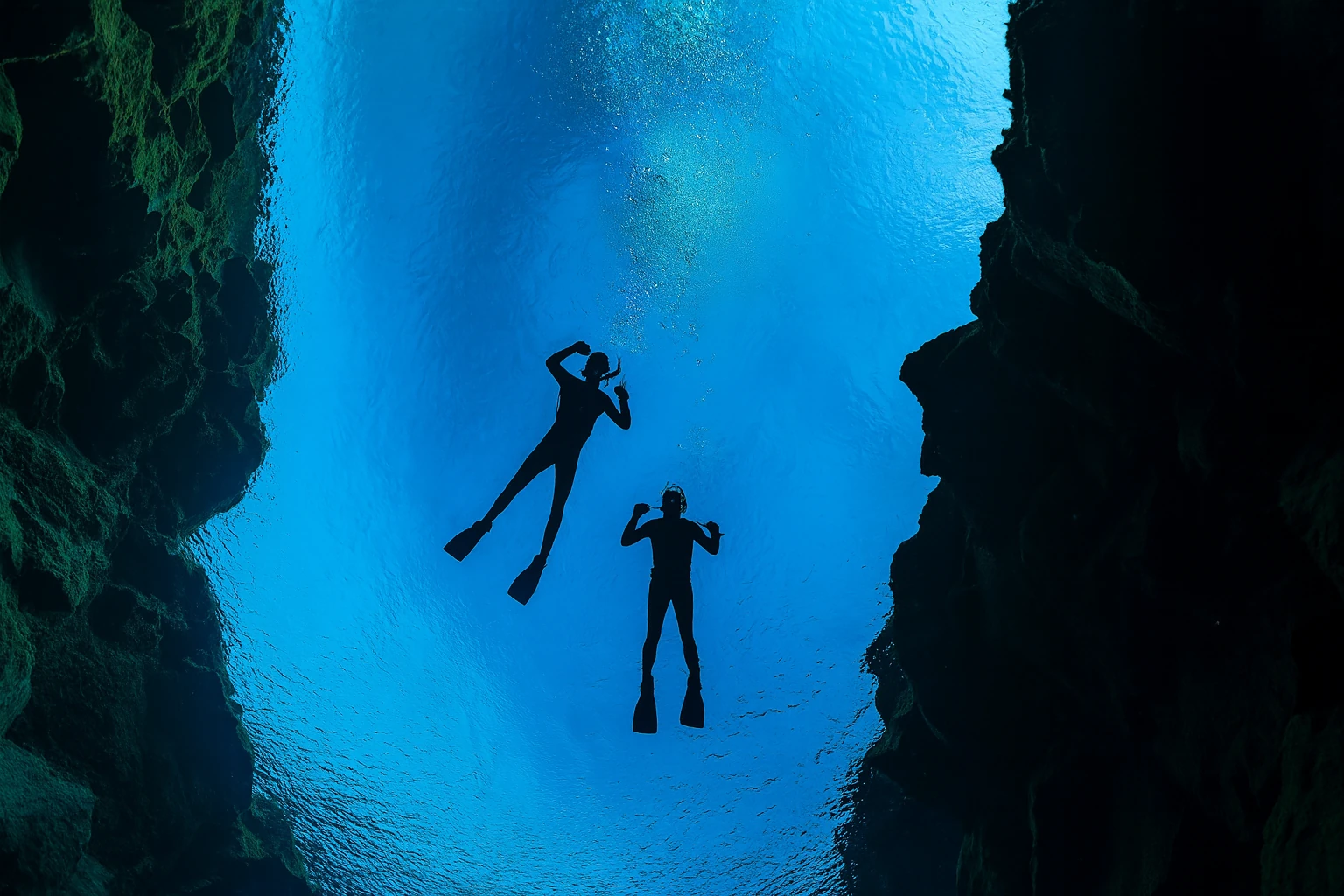Beneath the rugged lava fields of Iceland’s Thingvellir National Park lies a geological marvel: Silfra Fissure. This narrow chasm, filled with icy glacial water, captures the clash of continents and the purity of Iceland’s glacial landscape. It is both a breathtaking natural wonder and a living record of the restless planet beneath our feet.
Today, visitors from around the world enter Silfra’s waters to snorkel and dive between the tectonic plates, experiencing unmatched visibility and the rare sensation of floating directly in the divide of continents.
Snorkeling Silfra
Snorkeling is the most accessible way to experience Silfra Fissure. Participants wear insulated drysuits that allow them to float along the fissure’s surface in comfort despite the 2–4 °C water.
Even without diving experience, snorkelers are able to glimpse Silfra’s otherworldly geology, making it one of the rare adventure activities open to almost anyone.
Water temperature
2–4°C (35–39°F) year-round.
UNDERWATER VISIBILITY
100 meters (328 ft)
DEPTH
2–18 meters (6–60 ft)
WIDTH
1 meter (3 ft) – 8 meters (26 ft)
WHO CAN JOIN SILFRA SNORKELING TOUR?
There are certain requirements that you have to take into consideration when planning your Silfra snorkeling tour.
age
12+ years
Under 18 parent/guardian
height
150–200 cm
4’11”–6’7”
Weight
45–120 kg
99–264 lbs
Golden Circle Route
The Golden Circle is the most popular sightseeing route in Iceland, offering travelers a chance to experience some of the country’s most famous natural and cultural landmarks in a single day. Stretching roughly 300 kilometers round trip from Reykjavík, this route is both easily accessible and filled with unforgettable highlights, making it a top choice for first-time visitors.
Plan Your Visit
Transportation, Parking, Facilities and more
Location & Directions
Silfra Fissure is located inside Þingvellir (Thingvellir) National Park, about 45–60 minutes from Reykjavík along Route 36. If you’re driving, follow signs for Thingvellir and park at Lot P5, next to the Silfra meeting area. Most tours also offer pickup from Reykjavík hotels, ideal if you prefer not to drive in Icelandic weather.
Entrance Fees
Þingvellir National Park is free to enter, but there’s a small parking fee (around 1,000 ISK) and a Silfra access fee of about 1,500 ISK per person.
These are often included in guided tour prices, but self-drivers must pay at the visitor parking machines or online before entering.
Best Time to Visit
- Summer (May–September): Milder air temperatures, longer days, and more visitors.
- Winter (October–April): Fewer crowds, snow-covered scenery, but colder weather.
- Spring/Autumn: Balanced conditions and great light for photography.
